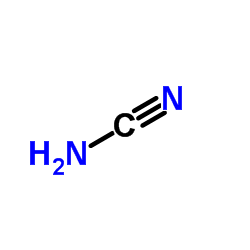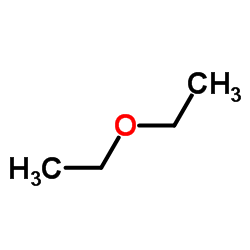630-10-4
| Name | selenourea |
|---|---|
| Synonyms |
2-Selenourea
SELENOUREA EINECS 211-129-9 RCRA waste number P103 selenocarbamate Carbamimidoselenoic acid Selenouronium Urea,seleno MFCD00008065 λ<sup>1</sup>-selanylmethanimidamide RCRA waste no. P103 Selenoharnstoff |
| Boiling Point | 230.913ºC at 760 mmHg |
|---|---|
| Melting Point | 210-215 °C (dec.) |
| Molecular Formula | CH5N2Se |
| Molecular Weight | 124.02400 |
| Flash Point | 93.453ºC |
| Exact Mass | 124.96200 |
| PSA | 52.04000 |
Synonym: Carbamimidoselenoic acid SECTION 2 - COMPOSITION, INFORMATION ON INGREDIENTS
Risk Phrases: 25 33 SECTION 3 - HAZARDS IDENTIFICATION EMERGENCY OVERVIEW Toxic if swallowed. Danger of cumulative effects.Moisture sensitive.Air sensitive. Potential Health Effects Eye: Causes eye irritation. Skin: Causes skin irritation.
Ingestion: May be fatal if swallowed. Poison by ingestion. May cause gastrointestinal irritation with nausea, vomiting and diarrhea. May cause liver and kidney damage. May cause central nervous system depression, characterized by excitement, followed by headache, dizziness, drowsiness, and nausea. Advanced stages may cause collapse, unconsciousness, coma and possible death due to respiratory failure. May cause kidney, liver and spleen damage. May cause loss of nails and hair. May cause tetanic and clonic spasms. Inhalation: May cause respiratory tract irritation. May cause effects similar to those described for ingestion. Chronic: Chronic inhalation may cause effects similar to those of acute inhalation. Chronic ingestion may cause effects similar to those of acute ingestion. SECTION 4 - FIRST AID MEASURES Eyes: Immediately flush eyes with plenty of water for at least 15 minutes, occasionally lifting the upper and lower eyelids. Get medical aid. Skin: Get medical aid. Immediately flush skin with plenty of water for at least 15 minutes while removing contaminated clothing and shoes. Ingestion: If victim is conscious and alert, give 2-4 cupfuls of milk or water. Never give anything by mouth to an unconscious person. Get medical aid immediately. Inhalation: Get medical aid immediately. Remove from exposure and move to fresh air immediately. If not breathing, give artificial respiration. If breathing is difficult, give oxygen. Notes to Physician: SECTION 5 - FIRE FIGHTING MEASURES General Information: As in any fire, wear a self-contained breathing apparatus in pressure-demand, MSHA/NIOSH (approved or equivalent), and full protective gear. Extinguishing Media: Use water spray, dry chemical, carbon dioxide, or chemical foam. SECTION 6 - ACCIDENTAL RELEASE MEASURES General Information: Use proper personal protective equipment as indicated in Section 8. Spills/Leaks: Vacuum or sweep up material and place into a suitable disposal container. Avoid generating dusty conditions. SECTION 7 - HANDLING and STORAGE Handling: Wash thoroughly after handling. Use only in a well-ventilated area. Minimize dust generation and accumulation. Avoid contact with eyes, skin, and clothing. Keep container tightly closed. Avoid ingestion and inhalation. Storage: Store in a tightly closed container. Store in a cool, dry, well-ventilated area away from incompatible substances. SECTION 8 - EXPOSURE CONTROLS, PERSONAL PROTECTION Engineering Controls: Use adequate general or local exhaust ventilation to keep airborne concentrations below the permissible exposure limits. Exposure Limits CAS# 630-10-4: United Kingdom, WEL - TWA: (listed as selenium compounds): 0.1 mg TWA (except hydrogen selenide, as Se) United Kingdom, WEL - STEL: (listed as selenium compounds): 0.3 m STEL (except hydrogen selenide, as Se) United States OSHA: 0.2 mg/m3 TWA (as Se) (listed under Selenium compounds). Belgium - TWA: (listed as selenium compounds): 0.2 mg/m3 VLE (as Japan: (listed as selenium compounds): 0.1 mg/m3 OEL (except SeH2 SeF6, as Se) Malaysia: (listed as selenium compounds): 0.2 mg/m3 TWA (as Se) Netherlands: (listed as selenium compounds): 0.1 mg/m3 MAC (as Se Spain: (listed as selenium compounds): 0.1 mg/m3 VLA-ED (except hydrogen selenide, as Se) Personal Protective Equipment Eyes: Wear appropriate protective eyeglasses or chemical safety goggles as described by OSHA's eye and face protection regulations in 29 CFR 1910.133 or European Standard EN166. Skin: Wear appropriate protective gloves to prevent skin exposure. Clothing: Wear appropriate protective clothing to prevent skin exposure. Respirators: Follow the OSHA respirator regulations found in 29 CFR 1910.134 or European Standard EN 149. Use a NIOSH/MSHA or European Standard EN 149 approved respirator if exposure limits are exceeded or if irritation or other symptoms are experienced. SECTION 9 - PHYSICAL AND CHEMICAL PROPERTIES Physical State: Solid Color: grey Odor: Not available. pH: Not available. Vapor Pressure: Not available. Viscosity: Not available. Boiling Point: Not available. Freezing/Melting Point: 214 - 215 deg C Autoignition Temperature: Not available. Flash Point: Not available. Explosion Limits, lower: Not available. Explosion Limits, upper: Not available. Decomposition Temperature: >200 deg C Solubility in water: very soluble in water Specific Gravity/Density: Molecular Formula: CH4N2Se Molecular Weight: 123.02 SECTION 10 - STABILITY AND REACTIVITY Chemical Stability: Stability unknown. Conditions to Avoid: Incompatible materials, exposure to air, exposure to moist air or water. Incompatibilities with Other Materials: Strong oxidizing agents, acids, chromium trioxide, potassium bromate. Hazardous Decomposition Products: Nitrogen oxides, carbon monoxide, carbon dioxide, selenium/selenium oxides. Hazardous Polymerization: Has not been reported SECTION 11 - TOXICOLOGICAL INFORMATION RTECS#: CAS# 630-10-4: YU1820000 LD50/LC50: CAS# 630-10-4: Dermal, guinea pig: LD50 = >50 mg/kg; Oral, rat: LD50 = 50 mg/kg. Carcinogenicity: Selenourea - Not listed by ACGIH, IARC, or NTP. Other: See actual entry in RTECS for complete information. SECTION 12 - ECOLOGICAL INFORMATION SECTION 13 - DISPOSAL CONSIDERATIONS Dispose of in a manner consistent with federal, state, and local regulations. SECTION 14 - TRANSPORT INFORMATION IATA Shipping Name: SELENIUM COMPOUND, N.O.S. Hazard Class: 6.1 UN Number: 3283 Packing Group: II IMO Shipping Name: SELENIUM COMPOUND, N.O.S. Hazard Class: 6.1 UN Number: 3283 Packing Group: II RID/ADR Shipping Name: SELENIUM COMPOUND, N.O.S. Hazard Class: 6.1 UN Number: 3283 Packing group: II USA RQ: CAS# 630-10-4: 1000 lb final RQ; 454 kg final RQ SECTION 15 - REGULATORY INFORMATION European/International Regulations European Labeling in Accordance with EC Directives Hazard Symbols: T Risk Phrases: R 25 Toxic if swallowed. R 33 Danger of cumulative effects. Safety Phrases: S 20/21 When using do not eat, drink or smoke. S 28A After contact with skin, wash immediately with plenty of water. S 45 In case of accident or if you feel unwell, seek medical advice immediately (show the label where possible). WGK (Water Danger/Protection) CAS# 630-10-4: No information available. Canada CAS# 630-10-4 is listed on Canada's NDSL List. CAS# 630-10-4 is not listed on Canada's Ingredient Disclosure List. US FEDERAL TSCA CAS# 630-10-4 is listed on the TSCA inventory. SECTION 16 - ADDITIONAL INFORMATION MSDS Creation Date: 9/02/1997 Revision #2 Date: 3/18/2003 The information above is believed to be accurate and represents the best information currently available to us. However, we make no warranty of merchantability or any other warranty, express or implied, with respect to such information, and we assume no liability resulting from its use. Users should make their own investigations to determine the suitability of the information for their particular purposes. In no way shall the company be liable for any claims, losses, or damages of any third party or for lost profits or any special, indirect, incidental, consequential or exemplary damages, howsoever arising, even if the company has been advised of the possibility of such damages. SECTION 16 - ADDITIONAL INFORMATION N/A |
CHEMICAL IDENTIFICATION
HEALTH HAZARD DATAACUTE TOXICITY DATA
|
| Hazard Codes | T,N |
|---|---|
| Risk Phrases | 23/25-33-50/53 |
| Safety Phrases | S20/21-S28-S45-S60-S61 |
| RIDADR | UN 3283 6.1/PG 2 |
| WGK Germany | 3 |
| RTECS | YU1820000 |
| Packaging Group | II |
| Hazard Class | 6.1 |
|
~37% 
630-10-4 |
| Literature: Synlett, , # 12 p. 1983 - 1986 |
|
~% 
630-10-4 |
| Literature: Journal of Organic Chemistry, , vol. 34, p. 3549 - 3551 |
|
~% 
630-10-4 |
| Literature: Ann. Chim. Phys., , vol. 9, p. 289 - 375 Bull. Soc. Chim. France (2), , vol. 41, p. 599 - 600 C: MVol.D1, 23.9.5, page 274 - 276 |
|
~% 
630-10-4 |
| Literature: Annales de Chimie (Cachan, France), , vol. <6>9, p. 356 Bulletin de la Societe Chimique de France, , vol. <2>41, p. 18 DE607382 ; Fortschr. Teerfarbenfabr. Verw. Industriezweige, vol. 21, p. 219 |
|
~% 
630-10-4 |
| Literature: Annales de Chimie (Cachan, France), , vol. <6>9, p. 356 Bulletin de la Societe Chimique de France, , vol. <2>41, p. 18 DE607382 ; Fortschr. Teerfarbenfabr. Verw. Industriezweige, vol. 21, p. 219 |
|
~% 
630-10-4 |
| Literature: Annales de Chimie (Cachan, France), , vol. <6>9, p. 356 Bulletin de la Societe Chimique de France, , vol. <2>41, p. 18 |






